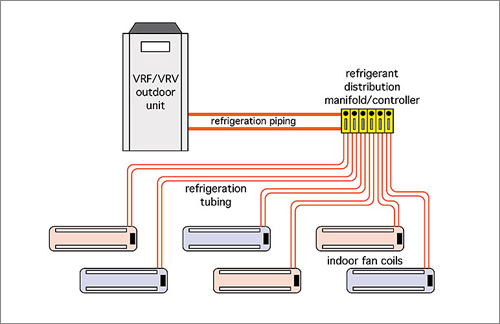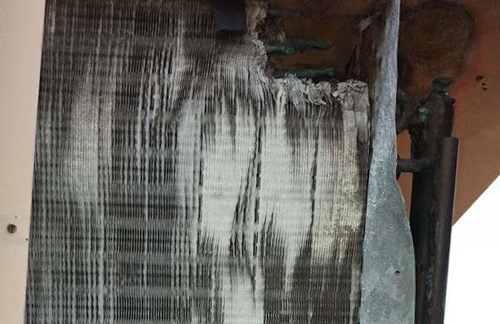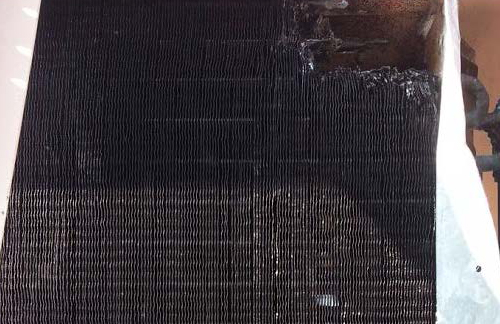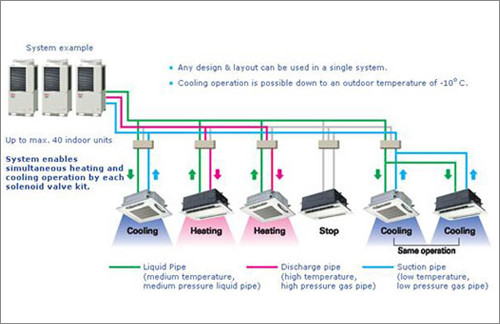Committed to Innovation
When it comes to HVAC equipment and controls, most consumers are aware that manufacturers strive to keep up with current technology trends and produce the most energy-efficient product they can. Often times this is to comply with state and federal energy codes. However, there are additional technologies available that should be considered. Dynamic researches, tests and validates new technologies. Here are two unique technologies that Dynamic uses, with remarkable results. These technologies would not be on our website if we were not 100% certain of their quality and performance.
AHTF
AHTF is a patented nanotechnology based on heat transfer fluid. Many systems and equipment rely on a fluid to transfer heat (energy). Water, in most cases, is that heat transfer fluid; it can be in the form of hot water, chilled water or condenser water. Sometimes Glycol is added to the water to provide freeze protection. Glycol inhibits heat transfer. How much? In some cases, as much as 30%.
AHTF is a fluid additive that increases heat transfer of any base fluid to which it is added. AHTF will increase heat transfer by as much as 25%. This translates to energy savings and equipment capacity. Third-party validation demonstrates that AHTF performs like no other heat transfer fluid on the market. AHTF saves energy, extends equipment life and increases system capacity.
If your facility uses water or glycol in its HVAC systems, contact us for an in-depth presentation of this very unique technology. We can provide information and presentations on exciting projects where we installed AHTF.
Enercoat
Enercoat is a patented A/C condenser coil treatment that protects, strengthens and improves condenser heat rejection. Over time, the condenser coils of an A/C unit perform poorly and eventually fail. Unlike the indoor coils that are protected from the elements and are filtered, the outdoor condenser coils are not. To keep these coils clean they need cleaning, usually pressure washing using harsh chemicals to dislodge pollen and dirt. These cleanings actually do as much harm as they do good by loosening and bending the coil’s fins.
The coil’s aluminum fins are bonded (mechanically) to the copper coil through which the refrigerant flows. These coils withstand temperatures that can range from 0 to 180 degrees Fahrenheit. Since aluminum and copper expand at different rates, the original bond is lost, which results in diminished heat transfer between the refrigerant and the air. In addition, annual cleanings and age etches away the fin surface further diminishing performance. This loss of heat transfer can lead to as much as a 30% increase in energy, according to the DOE. In addition, the units run higher-than-necessary head pressure, shortening compressor life.
Enercoat uses a graphene nano particle material that adheres to the copper coils and aluminum fins. Once applied, Enercoat restores the bond between the coil and the fin, strengthens the fins so they can be successfully cleaned and actually increases heat transfer. Dynamic is a trained and certified applicator of this technology.
VRF/VRV HVAC System Technology
Variable Refrigerant Flow (VRF) also known as Variable Refrigerant Volume (VRV) is a technology that has been around since the 80’s, mostly in Japan with equipment manufactured by Mitsubishi. The US has been slow to adopt this technology for a few reasons; few manufacturers, equipment not designed for the US market, and reluctance to move into a new technology. But, this has been changing over the last decade and now VRF/VRV manufacturers are ramping up their equipment and training to support a growing US market.
VRF/VRV technology now enjoys a proven reliability, ease of installation, flexibility, and offers advantages over conventional HVAC systems including water-source heat pumps. VRF/VRV is either heat pump or heat recovery system architecture. Similar to water-source heat pumps, they require connection of the terminal units to a common piping system. In this case, it is a refrigerant piping system not a water system. In a VRF/VRV system there is no requirement for a boiler, heat exchanger, pumps, and a cooling tower. The terminal units, such as fan coils, console units, cassette units and more, can be connected to the refrigerant piping system then to a single condensing unit (depending on tonnage requirements) and the terminal units can alternately supply heat or cooling or just recirculation.
The advantages to this system design are many. However, the greatest advantage is efficiency. VRF/VRV systems can, and often do, achieve operating cost of energy between 30% and 50% less than conventional systems. This technology, when properly designed and installed, will provide many years of reliable operation. In addition, these systems are available with a robust control system that manages system operation, and is user-friendly. From this perspective, VRF/VRV is a good choice and should be considered on most projects.








